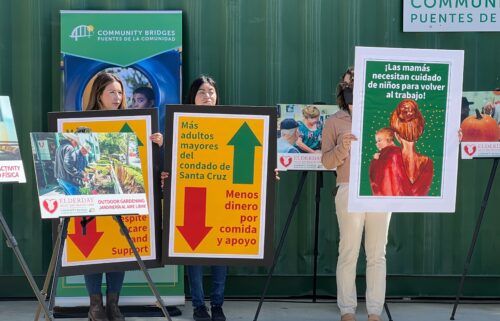Omicron cases dip in the US overall, but the wave is far from over in many parts of the country
By Deidre McPhillips, CNN
Covid-19 case counts in the United States have dipped in recent days, a promising sign that the Omicron wave is starting to subside. But hospitalizations and deaths are still rising, and experts say the country has not reached a peak across the board.
After reaching nearly 808,000 new cases on Saturday, the seven-day average of new cases nationwide has fallen 8% over the course of just three days, according to data from Johns Hopkins University.
Early signs that the wave may be starting to peak nationwide follow on the heels of similar trends observed in the Northeast last week.
Average daily case counts in New Jersey are now 43% lower than they were two weeks ago. New York and Maryland have also seen case counts cut by a third over the past two weeks.
But just like local officials in recent days, US officials are cautious not to be too optimistic.
“The next few weeks will be tough,” US Surgeon General Dr. Vivek Murthy said Sunday, and Americans should not expect a national peak soon.
The surge of the Omicron coronavirus variant is not moving across the country at the same pace everywhere, he said.
“There are parts of the country — New York, in particular, and other parts of the Northeast — where we are starting to see a plateau and, in some cases, an early decline in cases. The challenge is that the entire country is not moving at the same pace. The Omicron wave started later in other parts of the country, so we shouldn’t expect a national peak in the next coming days,” Murthy told Jake Tapper on CNN’s “State of the Union.”
Cases are still rising sharply in some states. Over the past two weeks, average daily cases in Oklahoma and Wisconsin have more than tripled. And they’ve more than doubled in more than a dozen others, according to Johns Hopkins data.
There are a few reasons it’s hard to declare what longer-term trends in case rates will be in real time, Dr. Andrew Pavia, an epidemiologist and infectious disease doctor with the University of Utah, told CNN.
Shortfalls in testing are one complicating factor.
“Testing resources are challenged in many places, and there may be a plateau simply because there is not much more capacity for PCR tests,” he said. Many home tests are not counted in the officially reported figures, either.
Indeed, the daily number of reported Covid-19 tests has dropped by a third over the past week: from an average of 2.4 million tests per day to about 1.6 million tests per day, according to data from the US Department of Health and Human Services. The seven-day average of reported tests is back to what it was a month ago, when Omicron was not yet dominant in the US.
The most recent days of reporting are often an undercount as data catches up, but this may be especially exaggerated as the health care system is pushed to the brink.
“Overwhelmed and understaffed health departments could be falling behind in reporting,” Pavia said.
He also notes that there is day-to-day fluctuation as large testing events or certain superspreader events could bring in a large bunch of cases at one specific time. And states lagging in the timeliness and completeness of their reporting make it challenging to compare them.
“Consistency over a long enough period to determine a true trend is key,” he said.
Hospitalizations and deaths lag behind cases
And even if cases have started to recede, there are still more hospitalizations and deaths to follow.
Covid-19 hospitalizations have been on the rise for weeks, with a record high 159,000 people hospitalized right now, HHS data shows. There are nearly 26,000 adults in the ICU with Covid-19, just shy of last year’s peak, and nearly a quarter of hospitals in the US are reporting a “critical staffing shortage.”
“In US health care, we know that the number of hospitalizations will peak perhaps a week after new cases, and deaths will lag even farther behind,” Pavia said.
“I fear any light at the end of the tunnel is not nearly close enough for our exhausted and disheartened health care workers.”
Deaths started to tick up last week, and the ensemble forecast from the US Centers for Disease Control and Prevention predicts that trend will continue over the weeks to come. There could be up to 35,700 deaths reported in the second week of February — more than 5,000 a day, according to the forecast.
Former FDA Commissioner Dr. Scott Gottlieb on Sunday urged Americans to try to remain vigilant and continue taking precautions to avoid the virus for the next several weeks, if they can.
“The reality is, most people are going to get Covid in their lifetime. I don’t think most people need to get Covid within the next month, and anything we can do to protect ourselves — to the extent that there are people who haven’t been exposed to this virus yet, who’ve gone out and gotten vaccinated and been able to protect themselves — you know, if they can keep themselves protected for the next several weeks, we’ll probably be through this Omicron wave. And then we’ll have to deal with this probably next fall, when we have better tools available to us,” he said.
The-CNN-Wire
™ & © 2022 Cable News Network, Inc., a WarnerMedia Company. All rights reserved.



